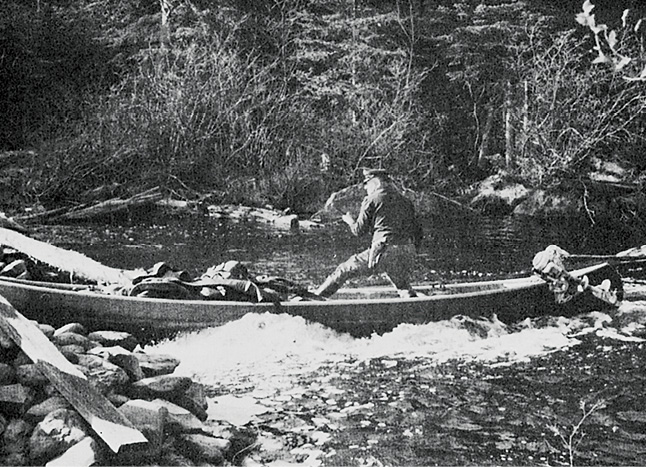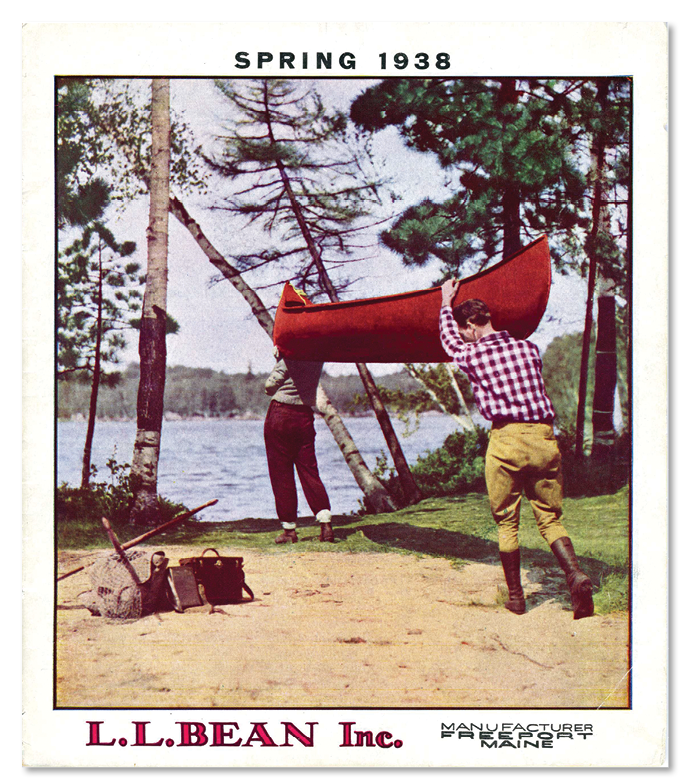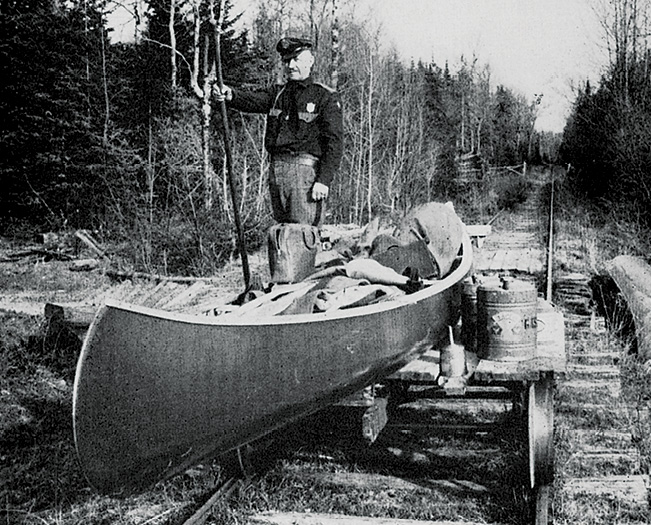Chapter 41
Canoeing
If you intend to use your canoe on swift water as well as lakes and ponds, a twenty-foot Guide’s Model is best. If the canoe is to be used only on lakes and ponds, a canoe of the same size with keel is preferable.
Two paddles, one 5 ½ feet long and the other 6 feet, are necessary. Use paddles of seasoned maple or ash with well-shaped blade and shank.
For quick water work you should have a good spruce pole 11 or 12 feet long and 2 inches in diameter, equipped with an iron socket on one end. A sponge for removing water and about 30 feet of strong clothesline is almost a necessity.

Warden Bert Duty poling over a dam on Mud Pond Stream, Maine.
The pole is indispensable for going up swift streams where a paddle is useless. For going down stream, a pole is necessary to snub the canoe.
When going up a very fast stream where a pole cannot be used, attach one end of the clothesline to the bow of the canoe and walk along the bank of the stream and tow the craft as best you can. Let your companion keep the bow off shore with aid of the pole. There are many streams too swift for the proper use of a line, necessitating carrying the canoe around such rapids. Before using a canoe in quick water, fill it with water and let it soak on hour or two. A canoe that is very dry is apt to be brittle.

The most practical canoe for Maine Lakes and general canoe trips is the 20 ft. Guide model.
The best way to learn how to properly handle a canoe is to go canoeing with a person who is familiar with such a craft. You will learn how to handle the bow paddle first, then the stern, and later use of the pole. If you don’t have an instructor, I suggest that for practice purposes you put two or three rocks in the bow. The total weight of the rocks should be at least 100 pounds. Choose a calm day for your first few practice lessons, and stay on a lake, pond or river where there is only a little current.
Paddle in easy, steady strokes, with one hand just above the blade and other on the handle. Don’t try to reach out too far and attempt to make extra-long strokes. Steering a canoe without paddling on one side and then the other is mastered by a little practice.
You can go down many streams without using a pole, but I do not suggest it unless you know the streams well and also are aware of all the hidden rocks and sunken logs that might capsize your canoe if hit.

Poling canoe on dry land at Mud Pond Carry Tramway.
Take good care of your canoe. Don’t pull or push a canoe around the beach the way some folks handle rowboats. Carry a repair kit and examine your canoe daily while in use and repair all rips and tears.
Balancing of load in the canoe is very important. The heaviest of duffle must, by necessity, be in the center.
In running white water the load should balance slightly in back of center to allow the canoe to be swung or set instantly.
BILL GORMAN > Wooden canoes today are a niche product for wooden boat aficionados who admire their beauty, craftsmanship, as well as their functionality. Most paddlers opt for lighter vessels and paddles made of fiberglass, high-impact plastic, or Kevlar. Kayaks, which are faster and easier to maneuver, are equally popular.